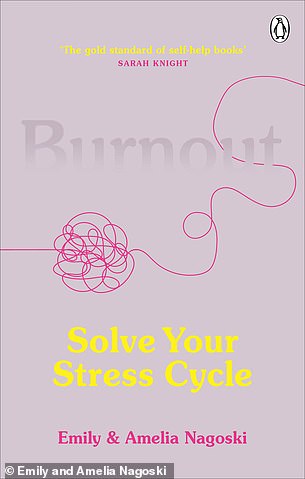We live busier lives than our parents or grandparents, with constant demands on our time all through the day. Especially now, in the “new normal’ imposed by the pandemic, most of us are working from home and are always connected. Our lives are ruled by the ‘ping’ sound of our email and text messengers. Despite the oft adopted timeframe of 9 to 5, our workday is increasingly starting with us waking up and ending with us hitting our beds. It is a practice that, sometimes, we unknowingly partake in, causing us much consternation and stress. The same is true for school and college students who are studying from home these days.
Children are not immune to stress. They have deadlines on class projects, multiple co-curricular and extracurricular activity classes to attend, and competitive exams to prepare for. All these could place a child under immense stress. The added pressure of social media only vitiates things.
The subject of stress and its consequent effects have been amply explored in the book, Burnout, Solve Your Stress Cycle by author twins Emily and Amelia Nagoski. Constant stress can cause ‘burnout’, a term which the authors sadly acknowledge is familiar to far too many of us these days.
In their research, they found that 52% of doctors and health care professionals suffer from burnout. Additionally, 20-30% of teachers, university professors, and humanitarian aid workers also experience burnout. Even parents of young children are not exempt from this as revealed by the initial research on parental burnout.
Useful Resources: effective communication courses | career improvement courses
This book helps explore the concept of burnout, how to tackle it and stress effectively, thereby purging it from our system. Although it addresses women because of the multiple roles they juggle, the steps to handle burnout apply to everyone, irrespective of age or gender.
The term ‘burnout’ was coined by Herbert Freudenberger in 1975, and has three components:
- Emotional exhaustion or the fatigue that arises from caring too much for too long.
- A decreased sense of accomplishment, including depletion of empathy and caring.
- Depersonalisation, or a sense of complete futility.
Don’t bottle up your stress
Stressors – stress causing stimuli – can be of many types, but the most prominent among these is chronic stress itself. A couple of examples of this could be the daily work stress caused by an unempathetic boss, or the stress that arises from having to look after sick people continuously as nurses and doctors do.
Burnout occurs if chronic stress and its allied emotions are bottled up inside the body without a proper outlet. Based on their extensive research, the authors argue that dealing with stress is a process that is separate from dealing with stressors.
Imagine that you are being chased by an angry dog a few feet away from your home. Your heart is pounding, and you run very fast and escape the dog by slipping inside your gate. You are safe now, but you have an important work call to attend. You immediately enter your room and dial into the call.
In this instance, you had no time to celebrate the success of saving yourself from the angry dog. You suppressed all those emotions of fear and exhaustion and conducted the work call like a professional. Thus, despite the stressor – the dog – no longer being a threat, your emotions from the negative experience, such as fear and mental exhaustion, remain buried inside since they did not have a proper outlet.
The authors say that all these bottled emotions, which are not given an outlet, can cause burnout if they are not released consciously.
After escaping the dog, if you had the opportunity to scream jubilantly, hug your partner, child or parent and narrate the story of your big escape, then the negative emotions from the experience would have been released. They would not fester inside you and cause burnout, a key message from the book.
How to release stress
So how do we expend these hidden emotions and prevent burnout? Here’s what the authors recommend, based on scientific research:
- Physical activity: Exercising is the most efficient way of completing the stress cycle, say the authors. Run, swim, jog, dance for 20 -60 minutes to release pent-up emotions and stress.
- Breathing: Breathing softly and deeply also releases trauma. Breathe in for 5 seconds, hold for 5 seconds and release for 10 seconds to dial down any stress response.
- Positive social interaction: Meeting friends casually over coffee, or complimenting someone, even a stranger, can release stress.
- Laughter: Laughing together also releases stress effectively. It’s not the polite smiles but the genuine belly laughs that do the trick.
- Crying: Allowing yourself the luxury of a good cry also helps to offload the stress and release the emotions buried inside.
- Affection: Sharing affection with family members, such as hugging a child, is also helpful in releasing stress.
- Creative expression: The authors say, “engaging in creative activities today leads to more energy, excitement and enthusiasm tomorrow”. Try drawing, painting, singing, or telling a funny story to feel light and happy.
After taking these steps, how do you know you have expended these pent-up emotions and stress from your body? Here’s the Nagoski sisters’ answer: “All you need to do is recognise that you feel incrementally better than you felt before you started. You can notice that something in your body has changed, shifted in the direction of peace.”
We hope that the stress-busting tips from this book will help you begin your journey towards a healthier, happier and more relaxed life, where you start to forget the very meaning of the term “burnout”.
– Sandya Karnad Deviah, SoME Guide
– Cover Pic Courtesy: Express Digest




















